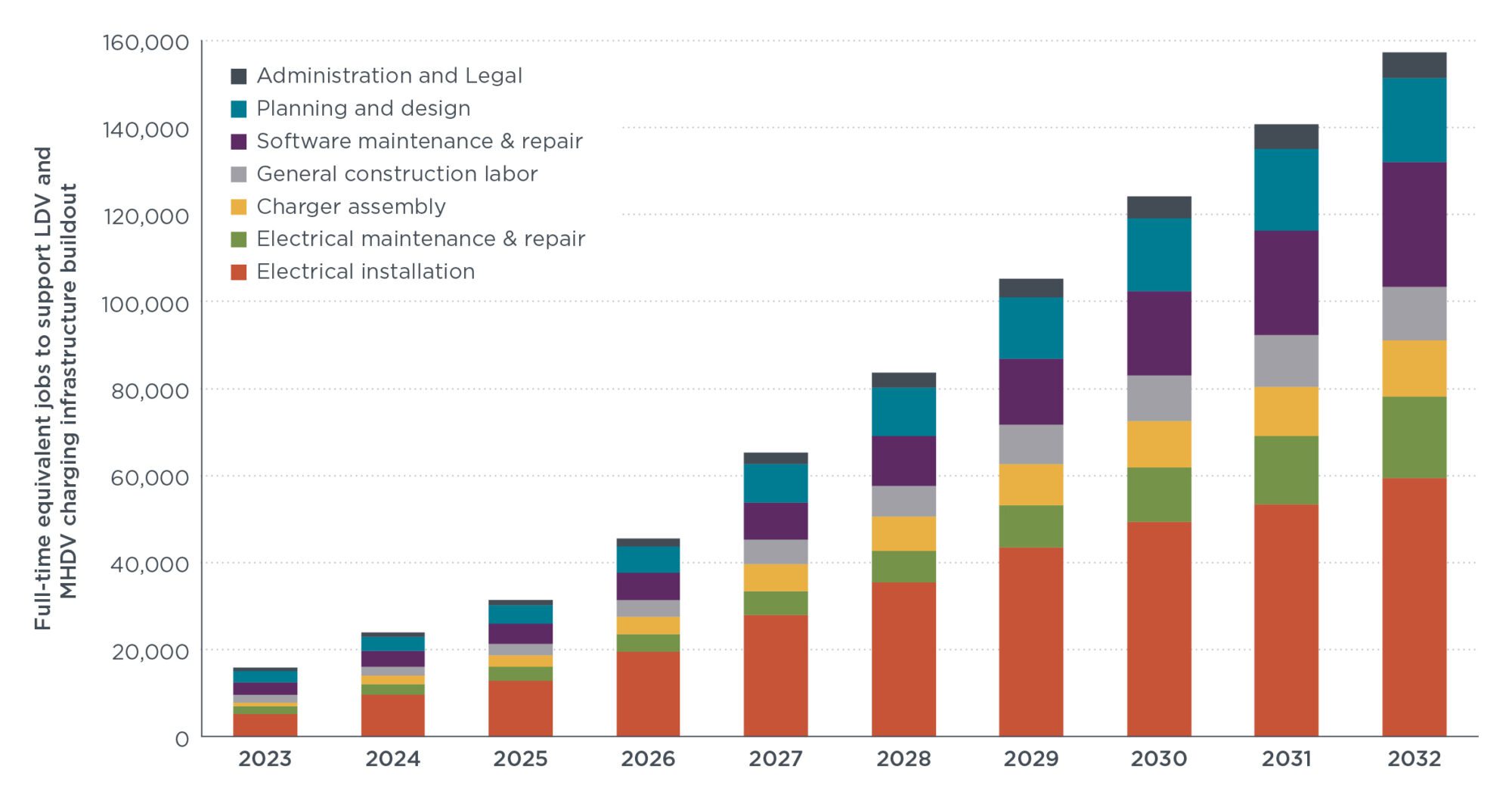Charging up America: Assessing the growing need for U.S. charging infrastructure through 2030
Report
Charging up America: The growth of United States electric vehicle charging infrastructure jobs
The accelerating transition to electric vehicles (EVs) will create new labor demands in many areas, including the production and maintenance of the vehicles, in addition to the production, installation, and maintenance of charging infrastructure. Jobs related to EV infrastructure installation and maintenance are especially important because these jobs are carried out at the site, creating growing opportunities for workers in the United States and spillover economic benefits in local communities.
This paper projects the number of jobs that will be needed to expand electric light-duty vehicle (LDV) and medium- and heavy-duty vehicle (MHDV) charging infrastructure to meet annual charging needs through 2032. It quantifies the charging needs of a growing electric vehicle fleet that is aligned with newly proposed federal standards, and then projects the number of new jobs needed to deploy the necessary infrastructure.

Figure 9. Estimated full-time equivalent jobs by job types from both light-duty and medium- and heavy- duty vehicle charging infrastructure buildout from 2023 to 2032
Key takeaways from the paper include:
- Growth in U.S. charging infrastructure can create about 160,000 jobs by 2032. Notably, more than 78,000 jobs, or close to 50% of the total jobs needed, will be electrical installation, maintenance, and repair jobs, while the rest are charger assembly, general construction labor, software maintenance and repair, planning and design, administration, and legal. 90% of these new jobs will support LDV EV infrastructure needs, while the remaining 10% will support MHDV EV infrastructure growth.
- Electric vehicle charging infrastructure buildout needs to accelerate in unison with EV uptake. By 2032, approximately 4.1 million non-home chargers (including workplace Level 2, public Level 2, and public DC fast chargers) and 37.4 million home chargers (including multifamily home and single-family home chargers) will be needed to support the LDV fleet. By 2032, approximately 29,000 ultra-fast and fast chargers, and 500,000 overnight chargers will be needed to support the MHDV fleet.
- There is potential for even greater job growth from increased domestic production and supply chain integration. This analysis estimates that the final assembly of 33% of Level 2 chargers and 100% of DC fast chargers will occur domestically by 2032, leading to a total of more than 13,000 jobs in charger assembly.
- Government policies and industry partnership can help grow a high-road EV charging industry and ensure that work is carried out by appropriately trained workers. Government policies that support a high-road EV infrastructure industry, such as wage and benefits standards, skills certification requirements, and support for workers choice to join unions, will be essential to help increase the pool of skilled workers to meet growing labor demand and maximize the economic and social benefits of public investments in charging infrastructure.
*This paper was edited on 27 January 2024 to update acknowledgements and citations.
